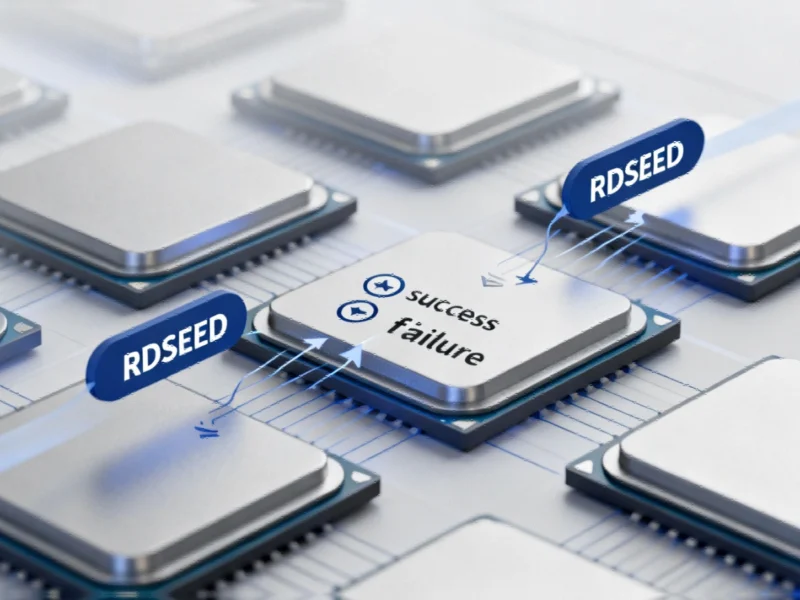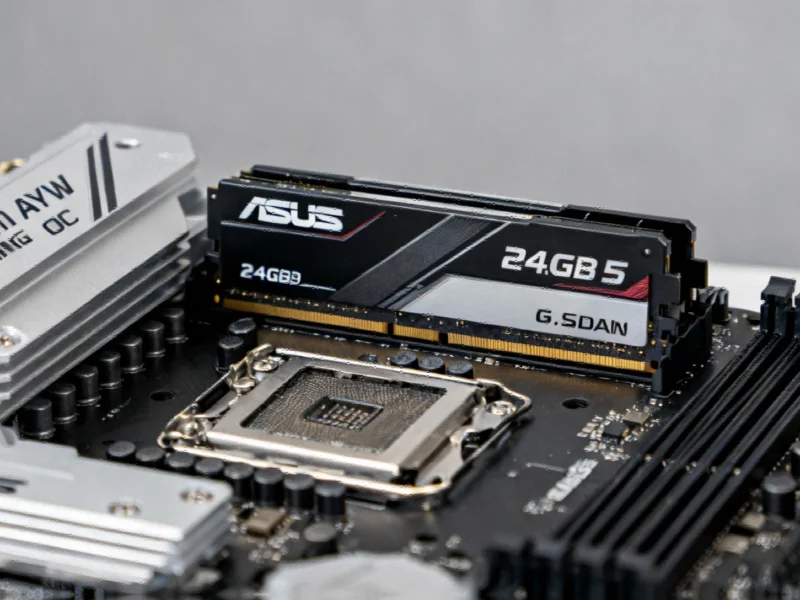Samsung Enters the XR Arena with Enterprise-Ready Features
Samsung has officially launched its first extended reality headset, the Galaxy XR, marking the company’s strategic entry into the competitive XR market. The device is now available in the United States and South Korea at $1,799, with optional controllers priced at $250. While consumer applications are receiving significant attention, the headset’s capabilities suggest strong potential for industrial and enterprise computing environments where immersive technologies are increasingly transforming workflows.
Table of Contents
- Samsung Enters the XR Arena with Enterprise-Ready Features
- Advanced AI Integration for Enhanced Productivity
- Multi-Display Workspace for Industrial Computing
- Enterprise-Grade Application Ecosystem
- Ergonomics and Interface Design for Extended Use
- Strategic Positioning in the Industrial XR Market
- Future Implications for Industrial Computing
Advanced AI Integration for Enhanced Productivity
The Galaxy XR distinguishes itself through sophisticated artificial intelligence features that could revolutionize industrial applications. The passthrough functionality, combined with AI-powered tools like Circle to Search, enables professionals to interact with their physical environment while accessing digital information seamlessly. For industrial settings, this means maintenance technicians could identify equipment components and instantly pull up technical specifications, schematics, or repair procedures without interrupting their workflow., according to industry news
Samsung has released comprehensive demonstration videos showcasing how these AI capabilities function in practical scenarios, providing valuable insights for enterprises considering XR integration., according to recent innovations
Multi-Display Workspace for Industrial Computing
One of the most promising features for professional users is the ability to work across multiple virtual screens. This functionality addresses a critical need in industrial computing where operators often monitor numerous data streams simultaneously. Control room operators, for instance, could visualize process control systems, security feeds, and performance metrics across expansive virtual displays, creating an immersive command center that transcends physical monitor limitations.
Enterprise-Grade Application Ecosystem
Samsung is building a robust application library specifically designed to leverage the Galaxy XR’s capabilities. For industrial applications, this includes potential integrations with CAD visualization tools, remote assistance platforms, and simulation software. The company‘s tutorial series demonstrates how these applications enhance the headset’s utility in professional contexts, from training simulations to complex data visualization.
Ergonomics and Interface Design for Extended Use
Recognizing that industrial applications often require prolonged use, Samsung has prioritized ergonomic design and intuitive interface navigation. The guided fitting process ensures optimal comfort and display alignment, crucial factors for workers who might wear the headset throughout their shifts. The user interface appears designed for efficiency, reducing the learning curve for employees transitioning to XR-enhanced workflows., according to recent innovations
Strategic Positioning in the Industrial XR Market
While Samsung has not yet announced global availability beyond the initial launch markets, the Galaxy XR represents a significant move into the enterprise XR space. The timing aligns with growing industry adoption of extended reality for training, maintenance, design, and remote collaboration. At its current price point, the device positions itself as a premium solution competing with established enterprise VR/AR systems, potentially offering a more integrated ecosystem for companies already invested in Samsung’s technology infrastructure., as additional insights
Future Implications for Industrial Computing
The Galaxy XR’s combination of high-quality passthrough, AI integration, and multi-screen productivity features suggests Samsung is targeting not just consumers but also enterprise and industrial users. As manufacturers, energy companies, and engineering firms increasingly adopt XR technologies, devices like the Galaxy XR could become standard equipment for field service, design review, and operational monitoring applications. The success of this platform will likely depend on Samsung’s ability to cultivate industrial-specific applications and partnerships within the enterprise computing ecosystem.
Related Articles You May Find Interesting
- Immersive VR Experiences Bridge Psychological Gap to Climate Change Impacts, Stu
- Private Credit’s Golden Age Fades as Blackstone Signals Return Shift for Manufac
- Researchers Develop AI-Powered Method to Improve Irrigation Efficiency
- Lead-Free Glass Innovation Shows Promise for Safer Radiation Shielding
- Advancing Superalloy Development: How Machine Learning and Data Augmentation Are
References
This article aggregates information from publicly available sources. All trademarks and copyrights belong to their respective owners.
Note: Featured image is for illustrative purposes only and does not represent any specific product, service, or entity mentioned in this article.



